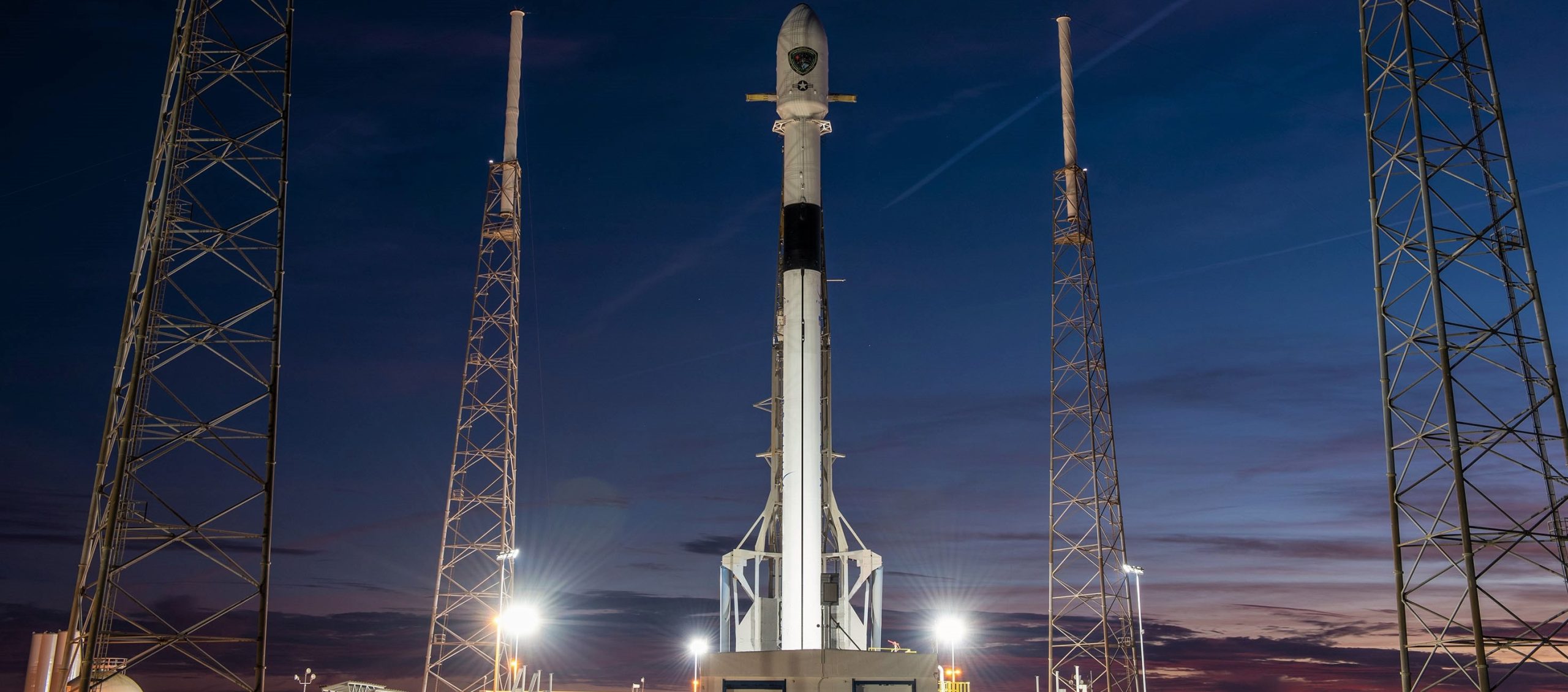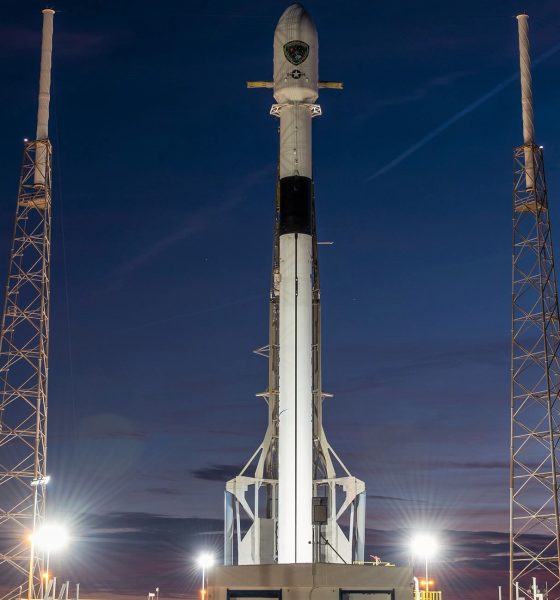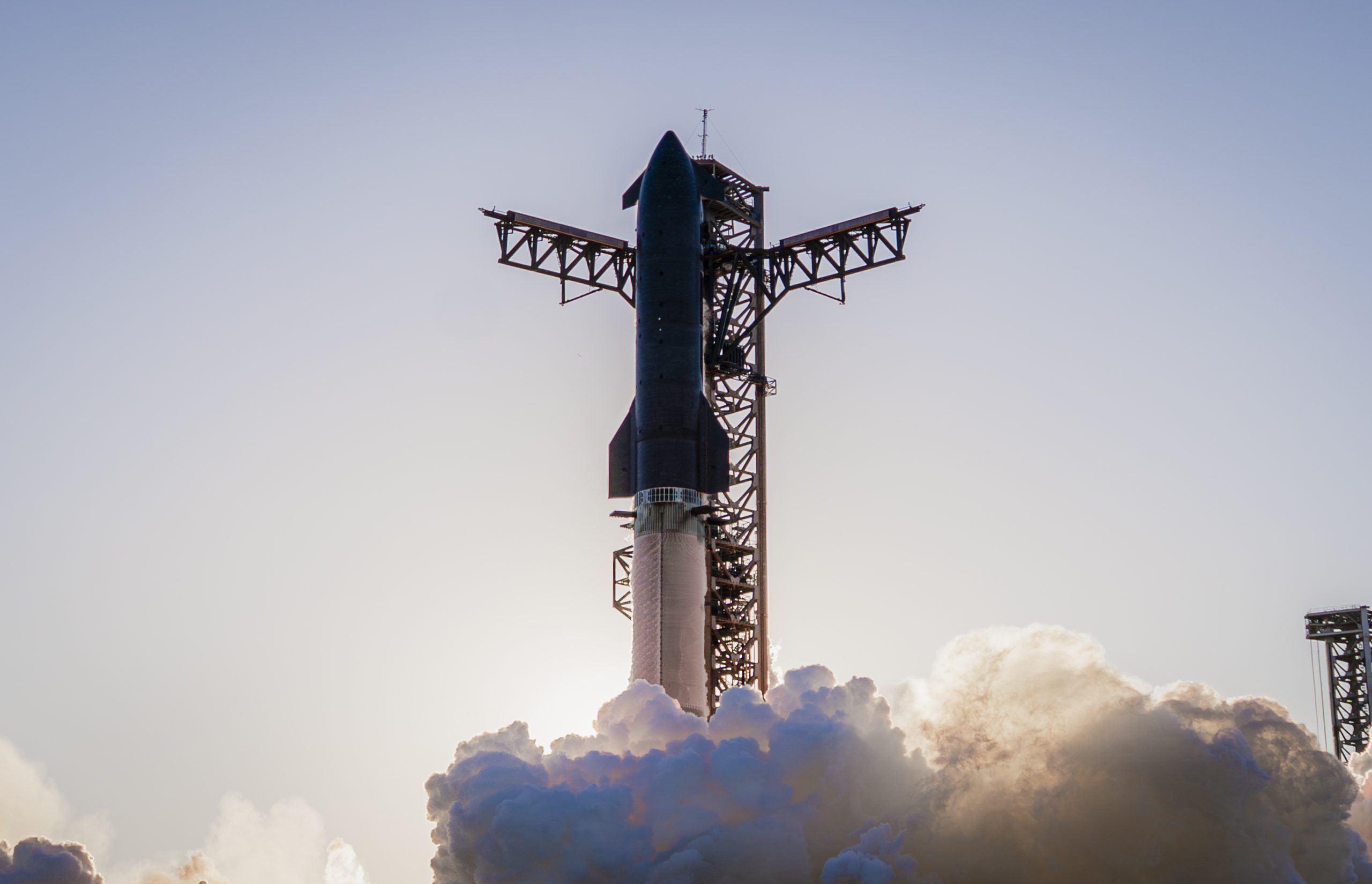

SpaceX
SpaceX set for expendable Falcon 9 Block 5 launch attempt after 48 hour scrub
Following a reported bug with Falcon 9 booster sensors that triggered a launch abort on the morning of December 18th, SpaceX has mitigated those problems and is ready to try again, hopefully placing the first of 10 new USAF GPS III satellites into orbit shortly after a 9:03 am EST (14:03 UTC) liftoff on December 20th.
Aside from being the first time SpaceX has launched a dedicated USAF mission won through a competitive procurement process, the launch of GPS III Space Vehicle 1 (SV01) will also be the first time SpaceX has intentionally expended a new Falcon 9 booster since July 2017, as well as the first time ever that a Falcon 9 Block 5 booster will be expended without attempting to land.
Team is working toward launch of GPS III SV01 tomorrow, December 20. Weather remains a challenge; currently forecasted at 20% favorable during the 26-minute launch window which opens at 9:03 a.m. EST, 14:03 UTC.
— SpaceX (@SpaceX) December 20, 2018
Standing vertical at SpaceX’s Launch Complex 40 (LC-40) pad, Block 5 booster B1054 looks undeniably incomplete or just off without grid fins and landing legs installed, like toast without butter or a Tesla with a V8 in place of its electric motors. The fact that Falcon 9 B1054 is a brand-new booster simply throws salt on the wound. However, the expendable configuration does serve as a reminder that, when it really comes down to it, SpaceX’s launch customers with as much sway as the Air Force ultimately have a major (if not final) say in the rocket’s trajectory.
If a customer demands an almost ridiculous level of redundancy, SpaceX likely has little to no say in that decision, even if it means that a brand new Falcon 9 Block 5 booster – designed to launch anywhere from 10-100 times in its lifetime – will have to be disposed of in the ocean after just one. While the performance-based decision to expend Falcon 9 appears to be far more of a security blanket than a practical necessity, it does still serve as a reminder that some exceptionally heavy payloads and/or high-energy orbits will inevitably preclude Falcon 9 or even Falcon Heavy from attempting booster landings. Down the road, major NASA or national security payloads will likely continue to demand expendable configurations, at least until BFR (Starship/Super Heavy) can take over from Falcon 9 and Heavy.
A sunny afternoon at SLC-40 — Following today’s scrub, SpaceX graciously let us photographers revisit the pad to check on our cameras ahead of tomorrow morning’s launch of Falcon 9 and GPS III. pic.twitter.com/7vzIDl9W9p
— John Kraus (@johnkrausphotos) December 18, 2018
Although SpaceX does appear to be serious Thursday’s launch attempt, the weather conditions are far from desirable thanks to the forecasted presence of “Electric Field, Cumulus/Thick Cloud, Disturbed Weather”, as well as the likelihood of strong upper-level winds near the Florida coast. With just a 20% chance that weather conditions will permit a launch and a brief 26-minute window of opportunity, there is little to no wiggle room for SpaceX to wait for a figurative break in the clouds, and another scrub seems extremely likely.
If the weather does force SpaceX to call off Thursday’s attempt, additional opportunities appear to be available on Friday (60% favorable) and Saturday (80% favorable). For now, however, Falcon 9 B1054 appears to have bought itself a few extra days to continue being an intact and (mostly) dry rocket. Catch the watch live at the link below.
For prompt updates, on-the-ground perspectives, and unique glimpses of SpaceX’s rocket recovery fleet check out our brand new LaunchPad and LandingZone newsletters!

Elon Musk
SpaceX maintains unbelievable Starship target despite Booster 18 incident
It appears that it will take more than an anomaly to stop SpaceX’s march towards Starship V3’s refinement.

SpaceX recently shared an incredibly ambitious and bold update about Starship V3’s 12th test flight.
Despite the anomaly that damaged Booster 18, SpaceX maintained that it was still following its plans for the upgraded spacecraft and booster for the coming months. Needless to say, it appears that it will take more than an anomaly to stop SpaceX’s march towards Starship V3’s refinement.
Starship V3 is still on a rapid development path
SpaceX’s update was posted through the private space company’s official account on social media platform X. As per the company, “the Starbase team plans to have the next Super Heavy booster stacked in December, which puts it on pace with the test schedule planned for the first Starship V3 vehicle and associated ground systems.”
SpaceX then announced that Starship V3’s maiden flight is still expected to happen early next year. “Starship’s twelfth flight test remains targeted for the first quarter of 2026,” the company wrote in its post on X.
Elon Musk mentioned a similar timeline on X earlier this year. In the lead up to Starshp Flight 11, which proved flawless, Musk stated that “Starship V3 is a massive upgrade from the current V2 and should be through production and testing by end of year, with heavy flight activity next year.” Musk has also mentioned that Starship V3 should be good enough to use for initial Mars missions.
Booster 18 failure not slowing Starship V3’s schedule
SpaceX’s bold update came after Booster 18 experienced a major anomaly during gas system pressure testing at SpaceX’s Massey facility in Starbase, Texas. SpaceX confirmed in a post on X that no propellant was loaded, no engines were installed, and personnel were positioned at a safe distance when the booster’s lower section crumpled, resulting in no injuries.
Still, livestream footage showed significant damage around the liquid oxygen tank area of Booster 18, leading observers to speculate that the booster was a total loss. Booster 18 was among the earliest vehicles in the Starship V3 series, making the failure notable. Despite the setback, Starship V3’s development plans appear unchanged, with SpaceX pushing ahead of its Q1 2026 test flight target.
Elon Musk
SpaceX issues statement on Starship V3 Booster 18 anomaly
The incident unfolded during gas-system pressure testing at the company’s Massey facility in Starbase, Texas.

SpaceX has issued an initial statement about Starship Booster 18’s anomaly early Friday. The incident unfolded during gas-system pressure testing at the company’s Massey facility in Starbase, Texas.
SpaceX’s initial comment
As per SpaceX in a post on its official account on social media platform X, Booster 18 was undergoing gas system pressure tests when the anomaly happened. Despite the nature of the incident, the company emphasized that no propellant was loaded, no engines were installed, and personnel were kept at a safe distance from the booster, resulting in zero injuries.
“Booster 18 suffered an anomaly during gas system pressure testing that we were conducting in advance of structural proof testing. No propellant was on the vehicle, and engines were not yet installed. The teams need time to investigate before we are confident of the cause. No one was injured as we maintain a safe distance for personnel during this type of testing. The site remains clear and we are working plans to safely reenter the site,” SpaceX wrote in its post on X.
Incident and aftermath
Livestream footage from LabPadre showed Booster 18’s lower half crumpling around the liquid oxygen tank area at approximately 4:04 a.m. CT. Subsequent images posted by on-site observers revealed extensive deformation across the booster’s lower structure. Needless to say, spaceflight observers have noted that Booster 18 would likely be a complete loss due to its anomaly.
Booster 18 had rolled out only a day earlier and was one of the first vehicles in the Starship V3 program. The V3 series incorporates structural reinforcements and reliability upgrades intended to prepare Starship for rapid-reuse testing and eventual tower-catch operations. Elon Musk has been optimistic about Starship V3, previously noting on X that the spacecraft might be able to complete initial missions to Mars.
Elon Musk
SpaceX Starship Version 3 booster crumples in early testing
Photos of the incident’s aftermath suggest that Booster 18 will likely be retired.

SpaceX’s new Starship first-stage booster, Booster 18, suffered major damage early Friday during its first round of testing in Starbase, Texas, just one day after rolling out of the factory.
Based on videos of the incident, the lower section of the rocket booster appeared to crumple during a pressurization test. Photos of the incident’s aftermath suggest that Booster 18 will likely be retired.
Booster test failure
SpaceX began structural and propellant-system verification tests on Booster 18 Thursday night at the Massey’s Test Site, only a few miles from Starbase’s production facilities, as noted in an Ars Technica report. At 4:04 a.m. CT on Friday, a livestream from LabPadre Space captured the booster’s lower half experiencing a sudden destructive event around its liquid oxygen tank section. Post-incident images, shared on X by @StarshipGazer, showed notable deformation in the booster’s lower structure.
Neither SpaceX nor Elon Musk had commented as of Friday morning, but the vehicle’s condition suggests it is likely a complete loss. This is quite unfortunate, as Booster 18 is already part of the Starship V3 program, which includes design fixes and upgrades intended to improve reliability. While SpaceX maintains a rather rapid Starship production line in Starbase, Booster 18 was generally expected to validate the improvements implemented in the V3 program.
Tight deadlines
SpaceX needs Starship boosters and upper stages to begin demonstrating rapid reuse, tower catches, and early operational Starlink missions over the next two years. More critically, NASA’s Artemis program depends on an on-orbit refueling test in the second half of 2026, a requirement for the vehicle’s expected crewed lunar landing around 2028.
While SpaceX is known for diagnosing failures quickly and returning to testing at unmatched speed, losing the newest-generation booster at the very start of its campaign highlights the immense challenge involved in scaling Starship into a reliable, high-cadence launch system. SpaceX, however, is known for getting things done quickly, so it would not be a surprise if the company manages to figure out what happened to Booster 18 in the near future.









